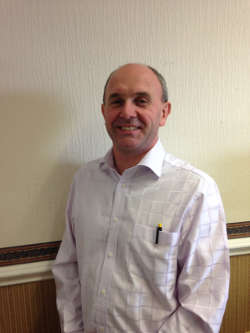The recent report from the Road Safety Foundation ties in with the third consecutive annual rise in KSI figures for the UK, which can no longer be viewed as a statistical anomaly.
The number of people killed on our roads has increased each year for the last three. In 2014 it was attributed to a statistical anomaly or perhaps abnormal weather. With two further years of increases, clearly we have turned the wrong corner.
Fatal accidents on UK roads peaked in 1966 at 7,985. Safety programmes put in place since reduced the figures steadily until 2013, when it was 1,713 deaths – still too many. This is despite a huge increase in population and traffic growth over the same period. There are of course many contributing factors to that, including driver behaviour and of course highway engineering measures.

Mike Harper
In 1968 High Friction Surfacing (HFS), known as “anti skid”, was rolled out for the first time in London. It was a road treatment with one specific aim – to reduce road casualties. The effect was immediate, with a 50% reduction in London in year 1, leading to a 10-year programme, treating high risk areas such as junctions, pedestrian crossings, roundabouts and bends. The programme recovered its costs by eight times in reduced accident costs, not to mention the massive improvement to accident outcomes for road users.
But over the last five or six years in the UK, the use of HFS has been in decline – reducing from approximately three million square metres per year five or six years ago to around one million today. Over that same period, the long trend of casualty reduction began to increase.
So have we forgotten the fundamentals of road safety? In terms of the road surface, good quality high friction surfacing, along with good quality road markings, are the most cost effective measures an authority can take for accident reduction.
Having spoken to many local authorities and Highways England, there is a perception that it doesn’t last very long and is therefore poor value for money.
The latest figure I can find for the estimate of the total cost of a fatal road accident taking all factors into account is £1.9m (source Kent CC, 2015) per fatality. So even if we ignore the devastating human cost of a fatal road accident, 1,800 road deaths in 2016 cost UK Plc £3.42bn approximately. So is it really the case that we can’t afford to use effective road safety measures to save lives?
Although the original HFS products then might have given in excess of 10 years life, today’s traffic conditions will exert more wear on an HFS system. Therefore, modern HFS systems provide the longest life and therefore the lowest whole life cost. For those local authorities who are now managing their assets over the long term, a move away from lowest first cost to invest in a high quality system will not only save lives, but reduce whole life cost – and reduce the disruption of maintenance interventions.
Let’s turn this deteriorating situation around – it can be done within existing budgets.
Mike Harper is director of highways at Stirling Lloyd as well as a director of the Road Surface Treatments Association and former chairman of the RSTA High Friction Surfacing Committee.
This is the first of a series of articles to mark Road Safety Week.
Register now for full access
Register just once to get unrestricted, real-time coverage of the issues and challenges facing UK transport and highways engineers.
Full website content includes the latest news, exclusive commentary from leading industry figures and detailed topical analysis of the highways, transportation, environment and place-shaping sectors.
Use the link below to register your details for full, free access.
Already a registered? Login